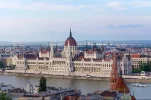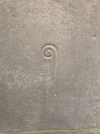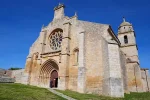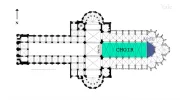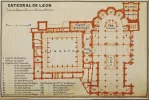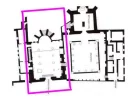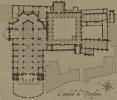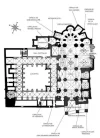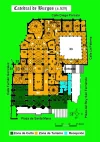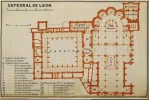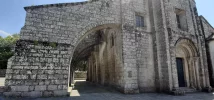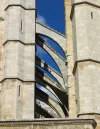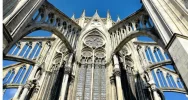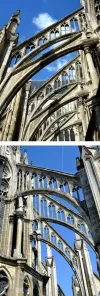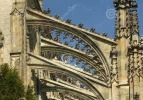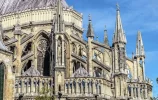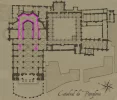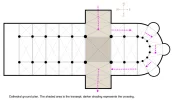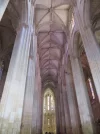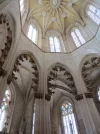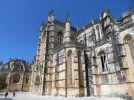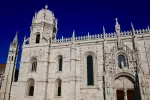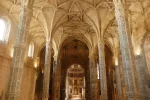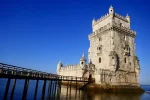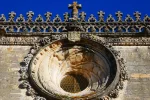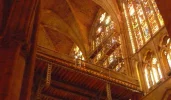- Time of past OR future Camino
- Some in the past; more in the future!
With the permission of @C clearly, I am starting the Gothic architecture for beginners thread, the third in a series that also includes Romanesque and Visigothic/Pre-Romanesque architecture. This is a ‘Choose Your Own Adventure’ post, where you can just read the basics or go deeper behind the spoilers if you desire.
Gothic is the architectural style that succeeds Romanesque in medieval Europe, beginning in the 1140s with the first Gothic cathedral, Saint-Denis (just outside Paris), and spreading to other places on the continent.
Some basic visual elements of Gothic churches include large interior spaces owing to high walls and ceilings, stained-glass windows that let in natural light, pointed arches and exterior flying buttresses to support the weight of the ceiling.
These elements were made possible by advances in architectural techniques, which meant that Gothic churches were quite different from the Romanesque churches that preceded them.
On the Camino de Santiago, two of the most famous Gothic churches are the cathedrals of Burgos (started 1221) and León (built mostly from 1205-1301, completed in 1472). In these two photos, you can see many typical Gothic features, including high towers, pointed arches, windows for light, sculptural tracery around the windows and flying buttresses (between the towers of the León cathedral).
Burgos Cathedral
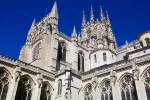
León Cathedral
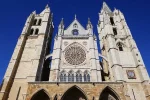
What are your favourite examples of Gothic architecture? Which features of Gothic architecture stand out for you? Do you prefer Gothic or Romanesque?
Feel free to discuss these questions and anything else about Gothic architecture, including recommended resources, in this thread!
Gothic is the architectural style that succeeds Romanesque in medieval Europe, beginning in the 1140s with the first Gothic cathedral, Saint-Denis (just outside Paris), and spreading to other places on the continent.
These notes come from the Age of Cathedrals course offered on Coursera.
- Gothic cathedrals, unlike Romanesque, are an urban phenomenon.
- Gothic was an international style, but was prominent in France, and especially in the Ile-de-France around Paris.
- About 80 Gothic cathedrals and almost 500 abbeys were built between 1180 and 1279, taking as little as 17 years and as much as more than 300 years.
- On average it took 250-300 years to build a Gothic cathedral.
Some basic visual elements of Gothic churches include large interior spaces owing to high walls and ceilings, stained-glass windows that let in natural light, pointed arches and exterior flying buttresses to support the weight of the ceiling.
These notes come from the Age of Cathedrals course offered on Coursera.
- A Gothic cathedral is in the shape of a cross and consists of these elements:
- Crypt (typically the oldest part), from the Greek kryptein (to hide), and used for burial and housing relics
- Apse
- Choir, between the altar and the apse on the shortest part of the vertical section of the cross
- Nave (from the Latin Navus, meaning boat), on the other side of the altar from the choir, where the parishioners worship (whereas the clergy would be in the choir on the other side of a screen).
These elements were made possible by advances in architectural techniques, which meant that Gothic churches were quite different from the Romanesque churches that preceded them.
These notes come from the Age of Cathedrals course offered on Coursera.
- In some Gothic churches (e.g. Notre Dame), thick columns on either side of the nave reinforce the ceiling vaults.
- In other churches, compound or composite piers (column shafts) are used instead.
- Ribbed vaults transfer the weight of the ceiling to precise points along distinct lines, replacing the barrel vaults of Romanesque.
- Pointed arches are 25-30 per cent stronger than Romanesque rounded arches.
- Flying buttresses gave external support for high walls.
- Gothic building is about vectors and forces (Romanesque was mass and weight).
- Gothic walls contain forces opposed to each other which counter each other.
- The bay pattern of construction also helped the churches become bigger and taller.
- The churches were built without measuring tools but instead by using ratios and proportions.
This is a short essay that I wrote for an Age of Cathedrals assignment:
Discuss three characteristics that distinguish Gothic from Romanesque churches.
Gothic churches are distinguished from their Romanesque predecessors in a number of ways owing to advances in architectural techniques that made more advanced buildings possible. Three of these differences are space, light and geometric forms.
Firstly, Gothic churches were larger than Romanesque churches, allowing them to hold more worshippers and project their towers and spires higher towards heaven. This difference in size is attributed to innovations such as flying buttresses, ribbed vaulting and compound piers that allowed Gothic church constructors to support higher walls and, as a result, larger churches.
Secondly, Gothic churches let in significantly more light than Romanesque ones. In Romanesque churches, thick walls with few windows were required to support the weight of the tunnel vault. In Gothic churches, by contrast, the additional support mechanisms allowed stained-glass windows to be crafted into the thinner, higher walls. These windows let in natural light and illuminated the church interior.
Finally, the round shapes of the Romanesque - seen in arches and vaults - were replaced by the pointed geometric forms of Gothic architecture, specifically pointed arches and ribbed vaults. These features had a practical function, as pointed arches were stronger than rounded arches and ribbed vaults helped distribute the weight of the ceiling, but they also became part of the Gothic visual aesthetic.
Discuss three characteristics that distinguish Gothic from Romanesque churches.
Gothic churches are distinguished from their Romanesque predecessors in a number of ways owing to advances in architectural techniques that made more advanced buildings possible. Three of these differences are space, light and geometric forms.
Firstly, Gothic churches were larger than Romanesque churches, allowing them to hold more worshippers and project their towers and spires higher towards heaven. This difference in size is attributed to innovations such as flying buttresses, ribbed vaulting and compound piers that allowed Gothic church constructors to support higher walls and, as a result, larger churches.
Secondly, Gothic churches let in significantly more light than Romanesque ones. In Romanesque churches, thick walls with few windows were required to support the weight of the tunnel vault. In Gothic churches, by contrast, the additional support mechanisms allowed stained-glass windows to be crafted into the thinner, higher walls. These windows let in natural light and illuminated the church interior.
Finally, the round shapes of the Romanesque - seen in arches and vaults - were replaced by the pointed geometric forms of Gothic architecture, specifically pointed arches and ribbed vaults. These features had a practical function, as pointed arches were stronger than rounded arches and ribbed vaults helped distribute the weight of the ceiling, but they also became part of the Gothic visual aesthetic.
On the Camino de Santiago, two of the most famous Gothic churches are the cathedrals of Burgos (started 1221) and León (built mostly from 1205-1301, completed in 1472). In these two photos, you can see many typical Gothic features, including high towers, pointed arches, windows for light, sculptural tracery around the windows and flying buttresses (between the towers of the León cathedral).
Burgos Cathedral

León Cathedral

What are your favourite examples of Gothic architecture? Which features of Gothic architecture stand out for you? Do you prefer Gothic or Romanesque?
Feel free to discuss these questions and anything else about Gothic architecture, including recommended resources, in this thread!
Last edited:



